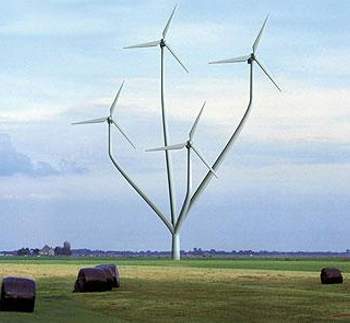
Wind turbines can be an efficient way of providing clean and renewable energy for your home. There are a number of small wind energy devices that generate power and cost effectively provide a significant level of electricity. Costs for a roof mounted microwind system start at about £1,500
Wind turbines can be an efficient way of providing clean and renewable energy for your home. There are a number of small wind energy devices that generate power and cost effectively provide a significant level of electricity.
Many invest in wind energy technologies in addition or as an alternative to solar power. Wind energy is also a key ingredient for the UK’s future energy growth, and the nation’s plan to reduce its carbon emissions.
The turbines harness the power of the wind and use it to generate electricity. Small systems known as microwind or small-wind turbines can produce electricity to help power the lights and electrical appliances in a typical home. Forty per cent of all the wind energy in Europe blows over the UK, making it an ideal country for small domestic turbines. Wind turbines use large blades to catch the wind. When the wind blows the blades are forced round, driving a turbine which generates electricity. The stronger the wind, the more electricity is produced. There are two types of domestic-sized wind turbine: ¦ Mast mounted: these are free standing and are erected in a suitably exposed position, often around 2.5kW to 6kW; ¦ Roof mounted: these are smaller than mast mounted systems and can be installed on the roof of a home where there is a suitable wind resource. Often these are around 1kW to 2kW in size. If your small wind system is connected to the National Grid then you can make money by selling any generated electricity to an electricity supply company. If the turbine is not connected to the electricity grid then unused electricity can be stored in a battery for use when there is no wind.
The benefits of wind electricity:
Harness a plentiful energy source – the UK has 40 per cent of Europe’s total wind energy;
¦ Cut your carbon footprint – wind electricity is green, renewable energy and doesn’t release any harmful carbon dioxide or other pollutants; ¦ Cut your electricity bills – wind is free, so once you’ve paid for the initial installation your electricity costs will be reduced;
¦ Store electricity for a calm day – if your home isn’t connected to the National Grid you can store excess electricity in batteries and use it when there is no wind.
To tell if a small scale domestic wind turbine is right for your home, there are a few key questions to consider: ¦ Are there any large obstacles like buildings, trees or hills near your home? Small domestic wind turbines work best in exposed locations, without turbulence caused by these type of obstacles; ¦ Is your home is a windy area? To be effective you need an average wind speed of no less than 5m/s; ¦ Is your home located away from the National Grid? Small domestic wind systems are particularly suitable for use in remote locations where mains electricity is unavailable; ¦ Do you need planning permission? Small domestic wind systems normally do require permission from your local authority, so check before you install a system.
Costs for a roof mounted microwind system start at about £1,500. Larger mast mounted systems cost between £11,000 and £19,000, including installation. These provide enough electricity for lighting and appliances in a typical home. Recent monitoring of a range of small domestic wind systems has shown that a well-sited 2.5kW turbine could save around £380 a year off electricity bills when some generation is exported, and a saving of around 2.6tonnes of CO² per year. Maintenance checks are necessary every few years, and a well-maintained turbine should last over 20 years. Battery storage life is typically between six and 10 years.